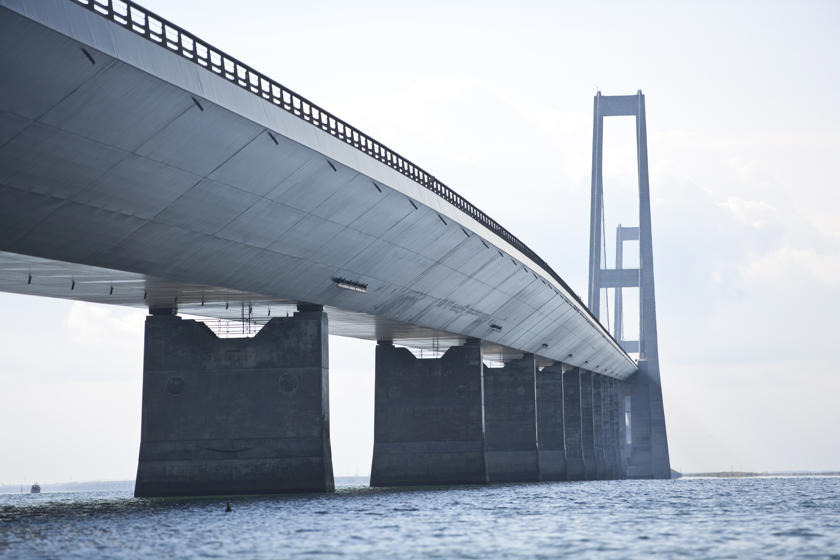
Knowledge and technology extend the service life of the Storebælt Bridge
We create results together
In recent years, Sund & Bælt has focused on digitising and optimising the maintenance of the Storebælt Bridge in collaboration with experts within technology and consultancy, including Rambøll.
We utilise and analyse data from the bridge’s approx. 15,000 measuring points and sensors. This means that we will be able to predict and plan future maintenance work more accurately.
According to a new assessment carried out by Rambøll, by optimising maintenance, the Storebælt Bridge will endure for 100 years longer than planned. For concrete and steel alone, this represents climate gains of approx. 750,000 tonnes of CO2.
Why the bridge can endure for 200 years
Several factors come into play when assessing the extended service life of the Storebælt Bridge. One of the factors is that a robust bridge was built from the start and where maintenance was all-important from day one.
Another major factor is the digital development and new technologies that contribute to a better overview of the condition of the bridge. The technologies make it possible for engineers to prevent and initiate remedial maintenance at the right time and to the right extent.
Concrete and steel and the climate accounts
Rambøll assessed four areas on the Storebælt Bridge
- West Bridge concrete
- East Bridge concrete
- Tunnel concrete
- East Bridge steel superstructure
A Life-Cycle Analysis was calculated for each area, which exclusively focused on CO2 by replacing the individual area as a whole quantity.

Service life extension has significant value
In Denmark, the construction industry is responsible for approx. 30% of total CO2 emissions. The carbon footprint is particularly significant in the production of new materials such as concrete and steel.
New technology optimises the operational phase, which means that the service life of the structures can be extended. Operating the facilities emits less CO2 compared to the building of new structures and facilities.
By extending the service life of the Storebælt Bridge by 100 years, up to 750,000 tonnes of CO2 will be saved, which corresponds to 52,000 households.